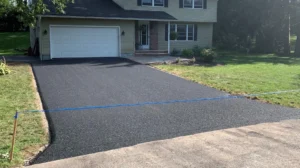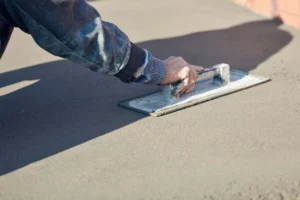Asphalt is a versatile material used for various purposes, including roads, driveways, and parking lots. Its durability and longevity depend on temperature fluctuations and traffic volume.
A good paving contractor like Paving Companies Summerville SC will follow proper drainage protocols to ensure that water drains away from the surface. Look for smooth transitions between the pavement and other surfaces or curbs. This will improve weight transfer and indicate a polished job.

Cost is always important when choosing a paving material for your home or business. Asphalt paving is less expensive than concrete and can be installed much faster. It also requires less maintenance than other paving materials. The price of asphalt varies by location and square footage and may be more expensive for projects in difficult-to-reach areas. Additionally, there are a variety of other factors that can impact the cost of a paving job.
Before laying down asphalt, a contractor should do some basic prep work. This includes grading and compacting the sub-base layer. This should help prevent water from sitting on the finished paving surface. The contractor should also use a proof roller to detect soft areas that may not be strong enough for load bearing. The contractor should then replace these areas with stronger aggregate materials.
Asphalt is more affordable than other paving materials, including brick and stone pavers. It is also more weather-resistant and less likely to develop potholes than concrete, making it an excellent choice for cold climates. In addition, asphalt can be colored to create a more unique look. It is also more environmentally friendly than concrete, as it melts ice quicker and can be used for road surfaces that need to be porous to allow water to pass through them.
Another advantage of asphalt is its constructability. This means it is easier to lay and compact than other pavement materials, speeding up construction and reducing labor costs. This feature makes it the preferred paving material for design-build contracting.
While the initial investment in asphalt paving can be high, it is a smart and long-term investment that will save you money in the long run. In addition, it is a recyclable material that can be reused over time, saving energy and cutting down on landfill waste. The asphalt industry has been working hard to find ways to cut the cost of constructing asphalt, including using reclaimed asphalt pavement (RAP), which contains some of the same ingredients as new asphalt but is cheaper.
Asphalt is a durable material that can last for years if properly maintained. However, it will deteriorate over time due to heavy traffic, weather changes, and other factors. This can result in cracking and other problems that affect the durability of the pavement. These issues can be costly and should be addressed immediately to prevent further damage. This can be done through various methods, including repairing cracks and repainting the surface. Depending on the severity of the problem, a complete asphalt replacement may be necessary.
Some factors determine the durability of asphalt paving, including rutting, temperature fatigue, and dynamic modulus. Pavement properties, climatic conditions, mix design, and paving procedures influence these factors. In addition to these factors, it is important to consider the long-term performance of the asphalt mixture to predict its lifetime. This can be done using a series of indoor and full-scale accelerated pavement testing.
One of the most important factors in determining the durability of asphalt paving is the strength of the base. The base must be dense enough to support the asphalt layer and flexible sufficient to avoid wheeled vehicle damage. It should also be porous to allow water to drain from the asphalt.
Another important factor is the ability of the asphalt to withstand repeated impacts. This is especially true for high-speed roadways. For this reason, many asphalt paving projects are designed to provide high durability. This can be achieved by adding special additives to the asphalt mix. These additives can help reduce the rutting of the asphalt and increase its longevity.
Asphalt is a popular choice for tennis and basketball courts because of its smooth surface, which allows for better ball bounce and player movement. It is also used as a surfacing material for outdoor running tracks, playgrounds, and other recreational areas.
While asphalt is a durable material, paving it can be expensive. Several factors can add to the overall cost, including equipment rentals, cleaning, and transportation expenses. Using the right cleaning agents can minimize these costs, but they can still be a significant portion of the total project cost.
Asphalt is a major contributor to atmospheric emissions, global warming, and other environmental problems. However, the emissions generated by asphalt processing can be minimized using various best practices. These include reducing the fuel used in transporting materials, utilizing on-site recycling, limiting idling time for construction equipment, and using alternative fuels. The most important factor in the sustainability of asphalt pavements is controlling hazardous chemicals released into the air as the mix is heated. These chemicals can contaminate water bodies, endanger aquatic life, reduce water quality, and degrade views.
The environmental impact of asphalt paving can be mitigated by incorporating warm mix asphalts and pervious asphalt pavements. These technologies reduce emissions and energy consumption by lowering the temperature of the asphalt mix. Moreover, these methods do not compromise the mechanical properties of asphalt. Research on these types of asphalts has shown that they are comparable in stiffness to hot mixes and have good fatigue resistance, Marshall immersion, rutting, and aging characteristics.
In addition, the use of recycled aggregates in warm mix asphalts helps reduce the need for fresh, virgin material. These products also contain recycled bitumen, which further reduces the impact on the environment. This method is also a great way to increase the lifespan of existing roads without wasting valuable resources.
Proper stormwater management is another key factor in minimizing the environmental impact of asphalt paving. This can be achieved by implementing drainage solutions, such as bioswales and retention ponds. In addition, it is important to avoid paving over sensitive areas, such as wetlands. These areas are essential habitats for many species and should be protected.
In addition, minimizing the number of road crossings during the paving process is a good idea. This will reduce the amount of traffic congestion and air pollution. It will also reduce the need for repaving, saving money and energy. Additionally, a thorough site inspection before paving can help identify any potential drainage and soil stability issues. These problems can cause costly delays and increase the project’s overall cost.
When working with asphalt, taking proper precautions to prevent injuries is important. It’s best to wear protective clothing, such as long pants and a T-shirt, and eye protection. Wear a face shield or safety glasses covering your whole face for maximum safety. Respiratory protection is also critical, especially in confined spaces. The best option is a respirator that’s been properly fitted and tested for your job.
Workers should be aware of any overhead obstructions, such as electrical wires, when paving. In addition, they should be mindful of underground utilities. The location of any utility lines should be marked with appropriate markings. Workers should also be careful when getting on and off equipment. They should be sure to use handholds/footholds that are solid and stable. Lastly, it’s essential that they read the Material Safety Data Sheet (MSDS) for the product they’re working with and follow any PPE instructions.
The mixing and testing processes used in asphalt paving can create hazardous fumes. These fumes contain many chemicals that are known carcinogens and can lead to lung problems. Exposure to these fumes can cause various symptoms, including headache, fatigue, skin rash, cough, and irritation of the eyes, nose, and throat.
During the mixing process, additives may be introduced to improve the durability of the asphalt mixture. Some of these additives are chemical compounds that increase the flexibility and durability of the asphalt. Samples are taken throughout the mixing process to ensure the mix meets specifications and quality standards. Special paving machines or trucks transport The asphalt to the construction site.
Asphalt is heated at high temperatures during mixing to achieve the desired properties. This process releases several hazardous substances, including benzo-a pyrene and polycyclic aromatic hydrocarbons, which can cause respiratory illnesses and cancer.
NIOSH research shows that engineering controls for large paving pavers can significantly reduce worker exposure to hot asphalt fumes. However, it’s not feasible to retrofit existing paving machinery with these technologies. As a result, NIOSH is encouraging paver manufacturers to develop generic kits for reducing worker exposures without creating tripping hazards from ductwork or placing undue burdens on the paver’s hydraulic or electrical systems.

